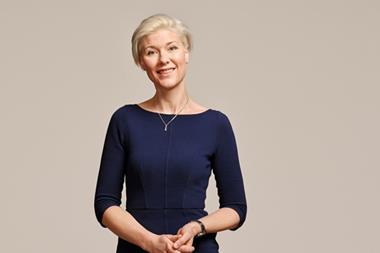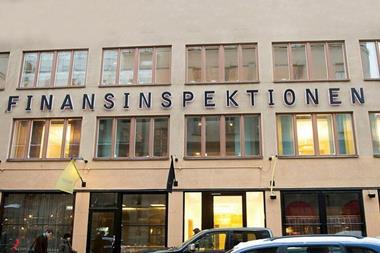In the early 1980s, the Crown Prince of Dubai, the late General Sheikh Mohammed bin Rashid Al Maktoum, conceived a plan to propel his native country from a little-known Arab Emirate to a globally-recognised, multi-functional destination.
As various large-scale developments began to appear, the question on most people’s lips was ‘when will this bubble burst? This question is still asked today, although it is now generally considered that the bubble has grown thicker and more resilient. Dubai has created its own unique market forces, which defy most standard economic principles.
Much of the Emirate’s meteoric rise can be seen directly in the country’s property market, which has included some landmark developments such as the Burj Al Arab Hotel – the world’s first seven-star establishment and a fixture in most tourist brochures.
The retail evolution
Initially, Duabi’s retail industry moved from the traditional souq environment around Dubai Creek – which served the indigenous market and Asian workers – to westernised malls such as Burjuman, City Centre, Wafi City and Al Ghurair Centre. The clientele here tends to be western expatriates.
More recently, mega malls such as the Mall of the Emirates, Ibin Batuta Mall and The Dubai Mall, each of which exceeds 250,000m2 have eclipsed these earlier developments and are targeting primarily the domestic and international tourist market. Dubai is so confident in its offer, it believes it can attract people from a four- to six-hour travel zone for a shopping experience that is claimed to be above and beyond anything else in the world.
Hot office market
The office market has also experienced significant activity. Sheikh Zayed Road, an eight-lane causeway running between Dubai and Abu Dhabi, was once flanked by open desert and isolated low-rise developments. It is now a high-rise office corridor extending from central Dubai for more than 5km. Stunning glazed towers, in some cases more than 50 storeys high, salute one another on opposite sides of this highway and accommodate many of Dubai’s leading national and international companies.
Other relatively new office developments include Dubai Internet City and Dubai Media City, both of which offer low-rise offices set within a well-designed landscaped environment.
Each has taken cues from similar office parks in western Europe and the US.
Such is the demand for offices in Dubai today, that landlords are now quoting rents of Dhs 200 (e45.46)/ft2 per annum which is over 100% more than what was achieved just two years ago.
Leisure boom
The leisure sector mainly comprises the hotel market which, until about 10 years ago, included a handful of five-star operators with more or less equal developments. By the end of 2004, Dubai’s hotel market totalled 26,000 rooms. In 2008 this is set to rise to 44,000 rooms, representing an increase in total stock of almost 70% in just four years.
Amazingly, however, Dubai still boasts an average annual occupancy rate of 84% within the five-star category, with many establishments exceeding this level during the shopping festival month and other peak periods.
More recently, Sheikh Mohammed - younger brother of the late Sheikh Maktoum and the country’s new leader - announced the development of DubaiLand, a mega leisure project to the south of the city that will cover an area the size of Singapore. Various development clusters will include a snow dome, a desertscape, a sports dome, a ‘Jurassic Park’, a polo club and so on.
Residential explosion
Names such as Emaar Properties, Nakheel and Damac are now recognised as some of the largest residential developers in the world and they all come from Dubai. The Emirate’s residential development has been phenomenal, with a number of large-scale schemes, including The Lakes, The Greens, The Arabian Ranches, Jebel Ali Gardens, Jumeirah Lakes and Jumeirah Islands to name a few. These are generally low-rise villa developments in a wide range of styles and sizes, scattered throughout lush green landscaping.
The Palm Jumeirah’s marketing angle is that it can be seen from outer space, and although this might seem to be a slightly strange way of promoting a project, the strategy appears to have worked.
Many believe that the announcement that expatriates can purchase a freehold interest in certain residential schemes has prompted much of the interest (further fuelled by the fact that expatriates will also receive residency). Undoubtedly this is partly true. However, at the end of 2005, freehold ownership for this sector had not been formalised.
Who is buying?
When considering Dubai you need to throw away all the books on economics that talk about demand and supply curves and pay attention to Dubai’s strap line “build it and they will come”. To date, it has appeared to defy all logic and continues to forge ahead at the most amazing pace with some outrageous development plans. Consultants will tell you that an oversupply is inevitable in all sectors, but if someone had told you 15 years ago what Dubai would be like in 2005 you would have said they were mad.
Certainly in the leisure and residential sector a high volume of interest has come from Europe and in particular the UK. The appeal of Dubai’s white sandy beaches, turquoise sea and never-ending sunshine is obvious.
And Dubai has quite simply made itself more accessible by offering numerous routes on what is probably one of the world’s preferred airlines – Emirates.
Although, by Western standards, all sectors within Dubai’s property markets continue to remain non-transparent and no one can point to a recognised yield curve, many of the regional boutique banks are setting up local property funds and attracting regional investors. Significantly, however, European and Far Eastern asset managers are slowly entering the market, suggesting that a more braodly based appetite will follow.












No comments yet